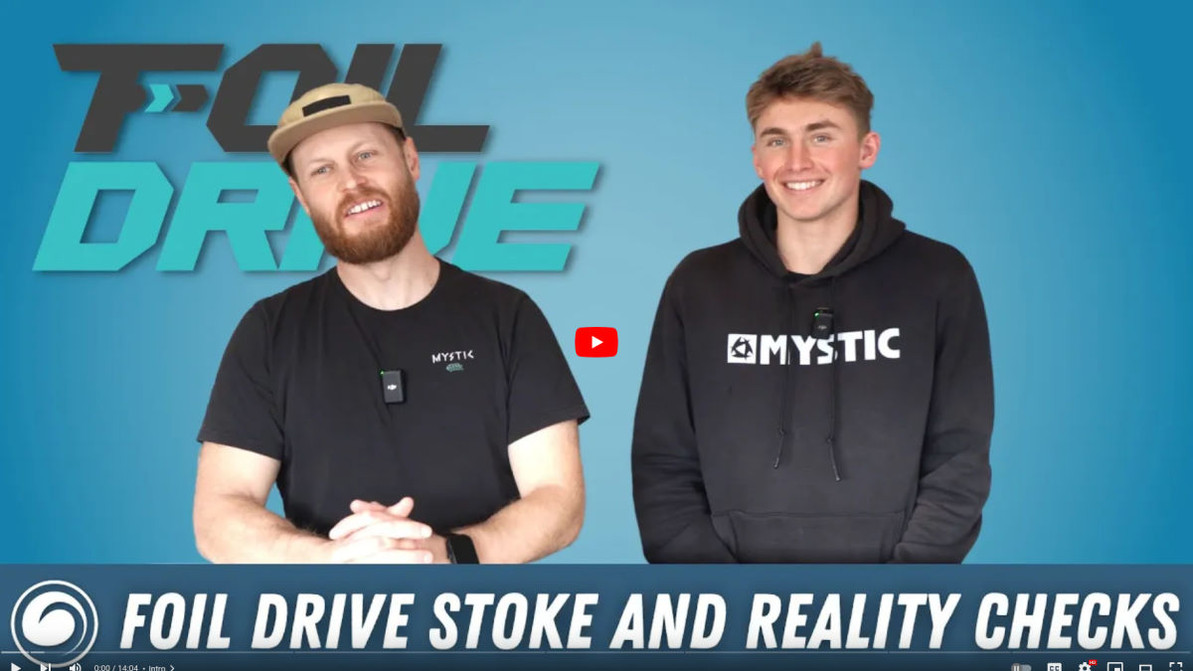Foil Drive | From Humble First Sessions to Consistently Catching Waves
Ryan and Cole recently experienced the Foil Drive for the first time, and they have some thoughts they'd like to share with anyone wondering if a Foil Drive is right for them, and what to know and expect.
Expectations
Cole: What did you think about Foil Drive before you got your hands on it?
Ryan: I was thinking the Foil Drive might be more like an eFoil where you kill the prop. There are some eFoils out there that have folding props, but your motor's still down in the water and they're a lot heavier. I thought this was going to be more in that direction, but a lighter weight unit.
Cole: So closer to an eFoil than what winging or prone foiling already feels like?
Ryan: Yeah, that was my first thought about it before going out there and testing it. How about you? What were you thinking?
Cole: When I was looking at Foil Drive, I originally thought that it was going to get me up to speed just like prone foiling when you paddle into a wave. I thought it was going to be the "easy button" so I would never have to paddle again. I'd never have to use a paddle for downwind. I think I set my sights a little bit too high and was humbled my first session, but I've really gotten dialed into the Foil Drive today.
Ryan: "Humbled" is a good way to describe the first session experience for both of us. I was expecting to just hit the button, go out there and pop up on foil, ride out to a wave, and start foiling. However, that was not the case. I think both of us had a similar experience our first time out. We grabbed gear that was too small.
Cole: Yeah, too small gear is the biggest thing that hurt me the first time I tried Foil Drive. I've spent a lot of time behind the boat and I've spent a lot of time on the waves, so I got overconfident. I didn't take the advice that Foil Drive tried to give us on YouTube and I tried using a 33.5 L prone foilboard to go try to surf the waves, and that was not the right call.
Ryan: I had a similar experience. My board was a little bit bigger because I don't have much prone experience at all, so I had a 54 L board that was about 5 ft long. It was not big enough to get me right up on foil. I had to get in the waves and use the waves to push and get me up. I couldn't get on the waves early enough to make up for my lack of skill. I was getting on the waves as they were pitching, and as you know from prone foiling, if you don't have the skills to get up in those kinds of conditions, you're just going to get pitched, and that's what happened. It was a humbling experience and I learned a lot that first session. We went back, talked over our experience, and we both stepped it up and went with bigger gear for our second session.
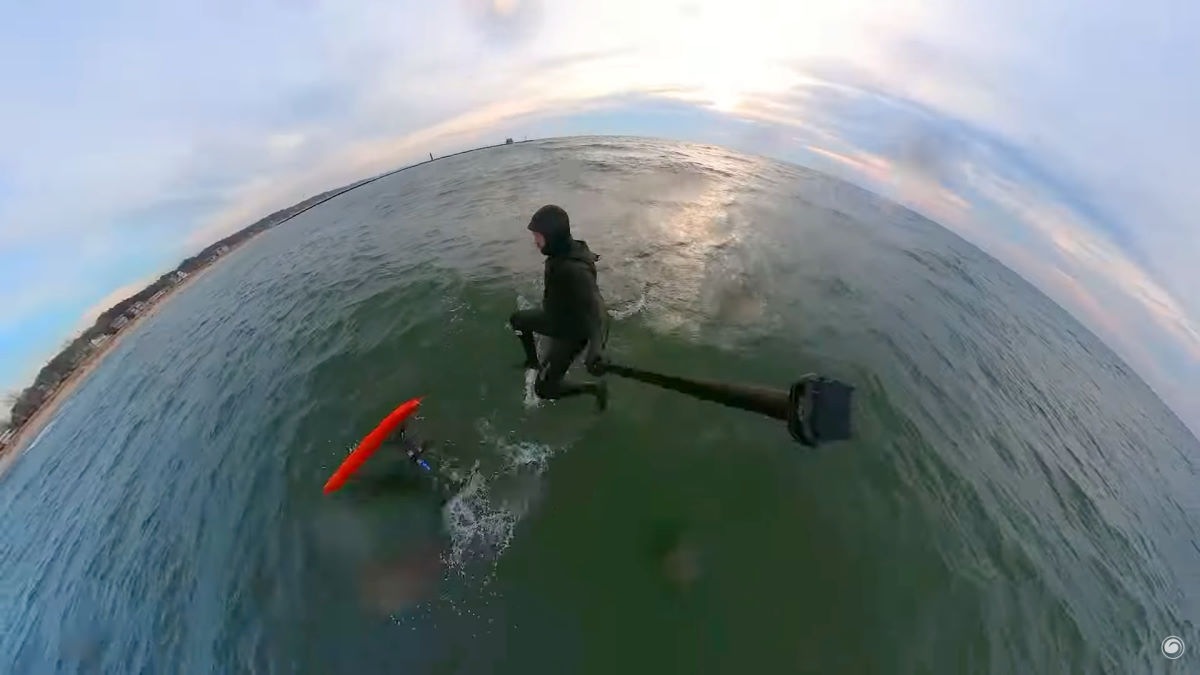
Learning Curve
Cole: In that first session when I was on that really small board, I learned that Foil Drive is a tool to learn how to ride. It gets you into more waves, but it's also a tool for more advanced riders to get into waves that they couldn't previously get in before. The waves I was in for my first session were really small. With the Foil Drive, I found myself actually getting into those waves when I should have gone with a bigger board. The fact that Foil Drive can help you get into those smaller waves and waves that you couldn't get into before certainly opened up my eyes.
Ryan: You can motor around a wave that you wouldn't have been able to paddle to as well, so it's a really cool tool, but there's definitely a learning curve for it.
Cole: We learned a lot from our first session, then we went back and watched as many videos from Foil Drive as we could before going into the second session. How did your second session go?
Ryan: I went quite a bit larger on my board size. I didn't quite have the ideal board that I was looking for, but I went with a 5'4 80 L board. I think it was still a little bit wide for what's ideal with the Foil Drive, but having that extra length and a little bit more volume made a big difference.
I also sized up my foil. The first session, I was going with something around 1,000 cm2, which is a nice, easy wave foil for me when winging. I bumped it up closer to 1200 cm2, and that made all the difference. I was able to go out in a downwind swell and catch those waves early enough that I was able to pop up before they were starting to pitch. I got into them nice and early with that setup.
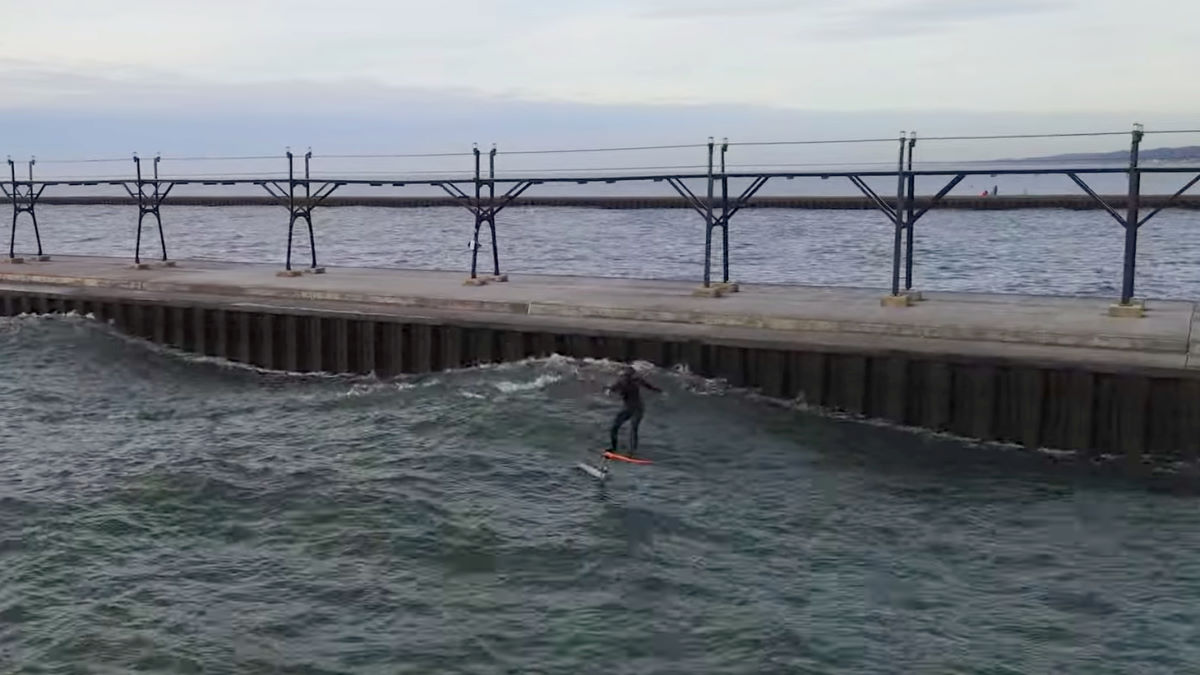
Cole: Did you feel like your proning skills improved with Foil Drive?
Ryan: Absolutely, big time.
Cole: Was that second session with Foil Drive your best prone foil session yet?
Ryan: For sure. I've probably got a handful of sessions trying to prone foil. On a good day, being out for an hour, I might get up into a couple of waves. Out there with the Foil Drive, I think I had 10 plus waves in an hour my first time out with the right sized gear.
Progression
Cole: I totally agree with Ryan about the progression that you can have with Foil Drive. As more of an intermediate to advanced prone foiler, when I hopped out on the Foil Drive today, I caught waves literally non-stop for about an hour-and-a-half to two hours. I brought both batteries with us and went back to the beach to swap them out.
I'd use the Foil Drive to get out a quarter mile to the outside break, hop on the wave, and ride it all the way to shore. If I wanted to get out of the wave because it started breaking down or there was a double-up, or maybe there was a better-looking wave out the back, I simply lowered the Foil Drive down into the water and jetted out to the next wave. It was ridiculous because usually you're pumping and you get tired, or you can only pump so far before you have to swing into the next wave so you don't lose speed and fall, but man, that Foil Drive just blew me away. It seemed like I was on foil for the majority of the time that I was out on the water today, which I've never had before.
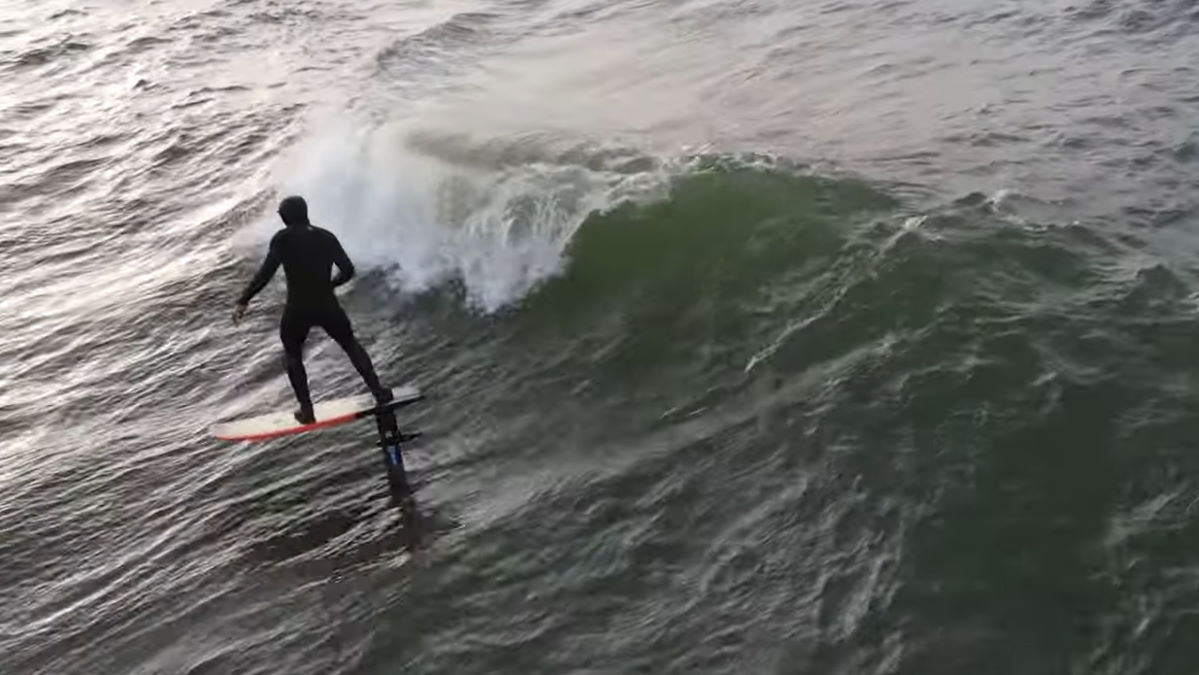
Ryan: It does take some practice learning how to come down to the Foil Drive and continue to ride, but I had a couple of waves where I wasn't paying attention, the wave closed out, and I wasn't anywhere, but I was able to hit the motor, keep going, get past that close-out, and get into the next wave and keep riding. So it's a super awesome tool for anyone to get out there and start riding in some swell and some waves. It really helps level up your progression. You can learn so much faster with it because you get more waves.
Takeaways
Cole: Once you learn how to use the Foil Drive and you get comfortable with it, it will increase your wave count and it will increase your time on foil. For something like prone foiling, the only way to get better is to catch more waves and spend more time on foil, and that's exactly what Foil Drive can offer to you. Ryan, what skills do you have to learn that are specifically for foils that have the Foil Drive on it?
Ryan: You might be familiar with Cole from some of the other videos he's done with us: lot of boat foiling experience, a lot of dock starting experience, and a lot of time on a foil. I have quite a bit of wing foil and kite foil experience, so I've got a good amount of time on a foil as well. I think you really need to have some experience foiling before you try to take the Foil Drive out into the waves. With the right setup, you can also use the Foil Drive system to essentially eFoil, so that's a way that you can get that foil experience, but you don't want to hop out on a Foil Drive before you're a proficient foiler and try to ride waves.
Cole: Right. You want to make sure that you have time on a foil behind the wing, behind the boat, under a kite... do something before you hop on the Foil Drive because otherwise you're spending a lot of money for something that might not do the job for you. But it'll certainly get the job done for you once you have a little bit of that foil experience.
Ryan: It's a tool that's an assist; it's not going to make you this amazing foiler from scratch. You're going to have to become a foiler, and then it's going to assist you along in that journey, no matter at what point you may be. There are ways you can eFoil it, all the way to riding downwind swells out in the ocean if you've got that prerequisite experience. It is there to assist you, and like Cole said, it does an amazing job of increasing your wave count.
Getting the Foil Drive Up and Out of the Water
Cole: When I first tried the Foil Drive, I thought that getting the Foil Drive unit up and out of the water was going to be this super hard movement I'd have to learn, but what I found today was that you simply lift the Foil Drive propeller unit out of the water. It's actually a super smooth transition; it's not abrupt. If you force it, that's when you're going to fall, but if you just let the Foil Drive do its thing and come out of the water, I didn't notice a huge difference. How did you feel about that?
Ryan: I didn't either. I thought it was very natural. I didn't pay too much attention to where the Foil Drive was in the water when I was taking off on waves, other than just knowing that when it comes out of the water to let go of the trigger. There was no real difference in power. I feel like it was very natural coming up onto foil. Eventually the wave had enough power that I was able to get the foil up high enough where it was out.
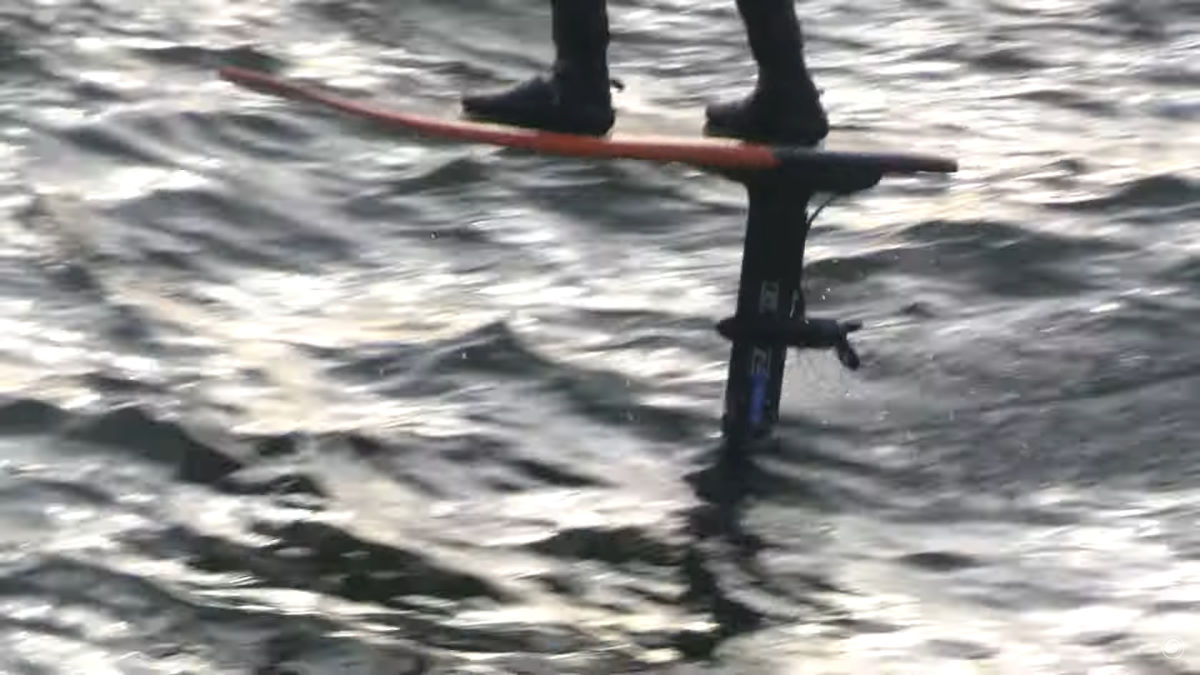
Reentering the Water
Cole: It's the weirdest thing; you think there'd be this moment where you get all this drag released when that unit comes out of the water, but you're just up and riding. Re-entering the water is a little bit different story. What I found is that when you want to put the Foil Drive back into the water, you want to make sure you do one of two things: you either start that propeller before you enter the water, or you start the propeller after you have that Foil Drive unit submerged completely underneath the water. If the propeller's halfway in and halfway out of the water, you're going to get this weird cavitation effect where the prop is hitting the water, but it's not, and it makes for a really unstable ride. That caused a lot of my falls to happen. Did you feel a similar way on that?
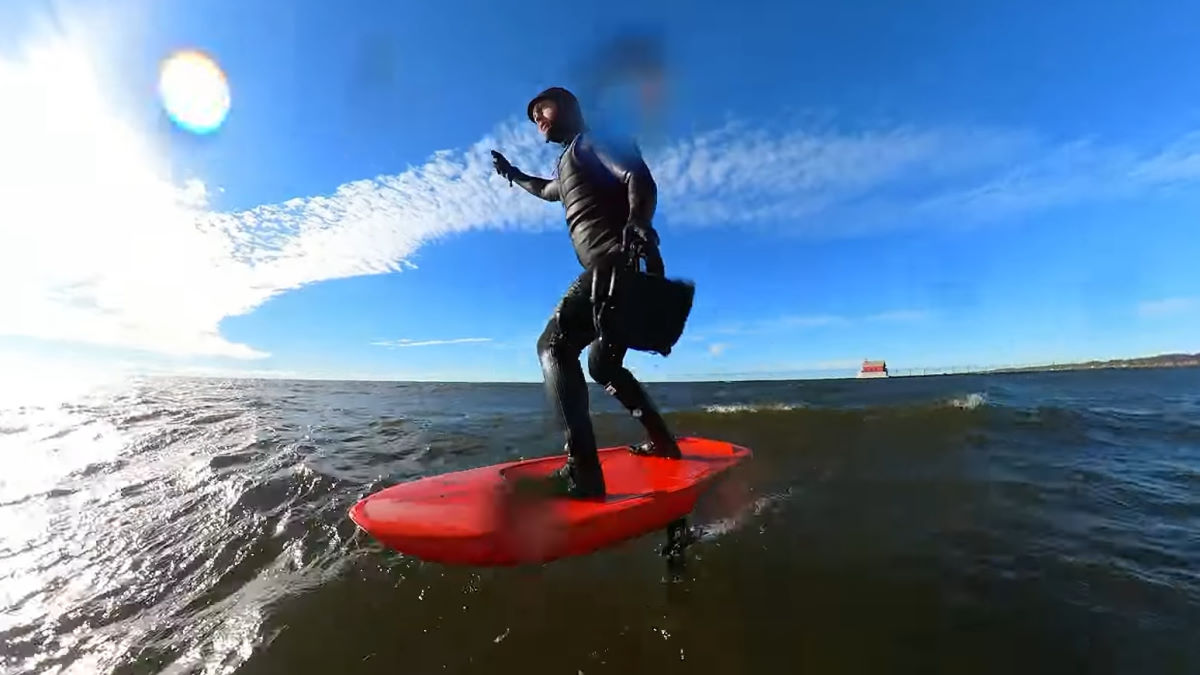
Ryan: I felt it was easiest if I could get the propeller spinning before I got the Foil Drive down. The Foil Drive is generally pretty high up on the mast, so you're essentially coming down off foil at that point. It's fairly easy to power it back up to full throttle and come down to it and ride the motor.
Summary
Cole: We wanted to share our story of learning how to use the Foil Drive with you so you can have a more efficient time with your learning curve when you get on your Foil Drive. We've been loving riding these things, and we know you will too.
MACkite Subscription Links:
YouTube | Instagram | Spotify Oddcasts
Contact MACkite Below:
800.622.4655 | Kiteboarder@MACkite.com | LIVE Chat Messenger


Recent Posts
-
Kiteboarding Tricks | How To Do A Backroll Hat Drag
You can use a little creativity to switch up even the more basic tricks and add a little f …26th Jul 2024 -
KT Ginxu Step-Bottom and Foil Drive Systems | A Perfect Match?
The step-bottom feature of the KT Ginxu foilboards is a big help in releasing the surface te …24th Jul 2024 -
Starboard Ace Air Inflatable Wing Foilboard Review
It's Wing Wednesday, and today Tucker's got an inflatable foilboard, the 2024 Starboard Ace …23rd Jul 2024

